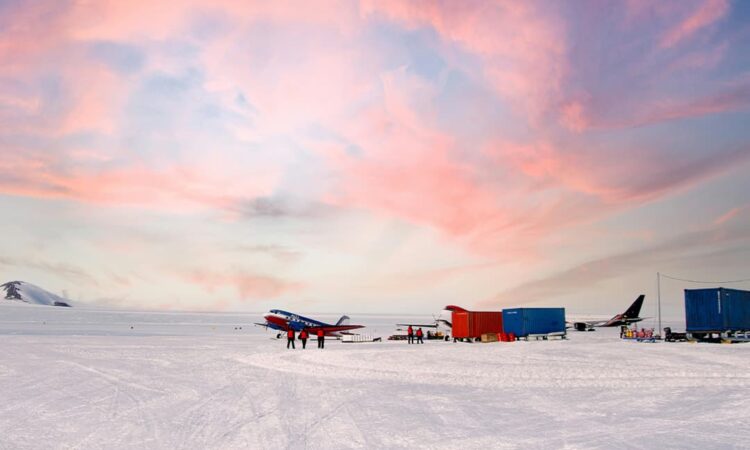Antarctica is called “White Mars” due to its harsh conditions. In 2005, the French-Italian scientific station Concordia was built there, where the European Space Agency (ESA) conducts its research. At the same time on the station in conditions of isolation, extremely low temperatures and lack of light and oxygen live and work about 60 people who have undergone months of training. The term of their work here is 9-12 months.
The station itself is 2 cylindrical buildings. The first of them is called “quiet” because it houses laboratories, living quarters and a hospital, the second one is called “loud”: it contains workshops, a gymnasium, warehouses, a canteen, a movie theater and a recreation room.
Even in summer in Antarctica it never gets above -30. Many common bacteria cannot exist here, and to just go outside, you have to wear several layers of warm clothing, special shoes, voluminous mittens and goggles – all together it’s no lighter than an astronaut suit.
“Concordia” is located at an altitude of 3300 meters above sea level, so the air here is thin, which means there is less oxygen in it. It’s also perfectly clean and completely odorless.
4 months a year people live in darkness
In Antarctica there is no day and night in the traditional sense: the sun does not rise from the horizon in winter and does not set behind it in summer. People spend 4 months in darkness. Because of this, the daily rhythm is disrupted and sometimes it is difficult to sleep or eat – it seems that you have dinner in the middle of the night. The first appearance of sunlight is a real celebration. Everyone drops what they’re doing, climbs on the roof and watches the sun rise for the first time in 4 months.
The nearest supermarket is 4,000 kilometers away.
“Concordia” is even farther from civilization than the ISS, and getting there is not easy: large-sized cargoes are brought as a sled caravan (delivery takes 10-12 days), and small cargoes and products are delivered by small aircraft designed specifically for extreme temperatures.
Despite the fact that the nearest supermarket is 4,000 kilometers away from Concordia, this does not mean that the explorers sit on bread and water: here they eat meat, fish, dairy products, fresh fruits and vegetables, and members of the multinational team prepare their traditional dishes – frog legs or borscht. Many products are kept frozen, and eggs, for example, are rubbed with paraffin.
In winter the station is completely cut off from the world
In winter it is impossible to get out of “Concordia”: there is no connection with the Big Earth and, if something unforeseen happens, you will have to rely only on yourself. Therefore, there is a well-equipped hospital, and a large part of the station is set aside for food stores. Food is also stored in the stockpiles at the station.
Usually about 15 people stay for the winter, so many people have 2 specialties here, for example, a plumber can assist in the operating room and a chef can be a firefighter at the same time.
On Concordia, they study how harsh conditions affect people. This is necessary for future space missions
The feeling of total isolation leads to stress and various psychological difficulties – from inattention to depression, but these are the subject of the study: scientists believe that this knowledge will also help prepare people for long space flights, improve flying machines and think about what the first stations on the Moon and Mars will be like. All team members keep video diaries and constantly wear a special watch that records sleep time, tracks who, how much and where they spend time, and with whom they socialize. The information is then analyzed to track changes in human behavior.
In addition, about 20 scientific projects are carried out at the station in parallel: seismologists, astronomers, meteorologists, climatologists, physicists work here.
At the station they know how not only to work, but also to have fun
The station staff likes interesting leisure time: researchers conduct excursions around the laboratories and tell others about their work, play basketball in the snow, enjoy discos and costume parties. Sometimes the team answers questions from schoolchildren and students via video link.
Astrobiologist Cyprien Verse keeps a blog where he posts photos of his everyday life. One of the scientist’s photo projects shows what a picnic in Antarctica can turn into.
It is forbidden to urinate in the shower on the Concordia.
Water on Concordia is made from snow. It takes a lot of fuel to melt it, so water is saved: after use in the washbasins and showers, the water is purified and fed there again. For this reason, you cannot use your own soap and shower gel: everyone is given a special product that is compatible with the purification system. Also, no urination is allowed in the shower, as the system cannot handle such waste products.
